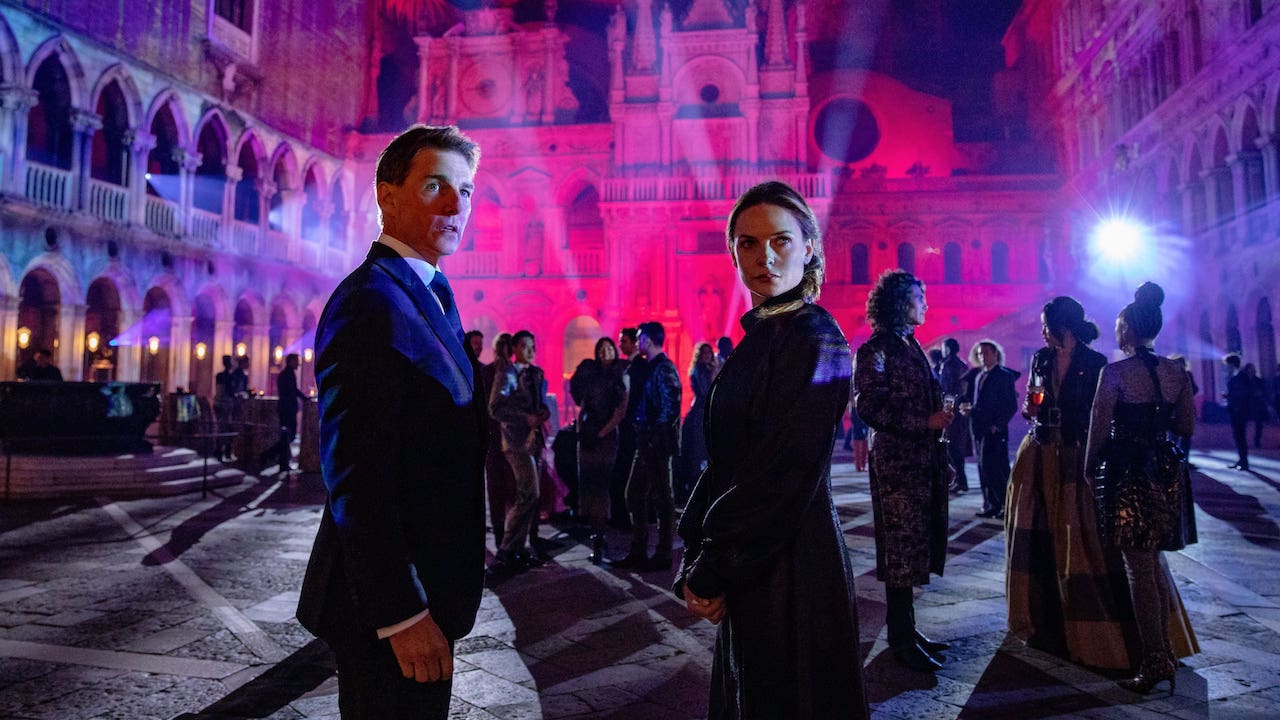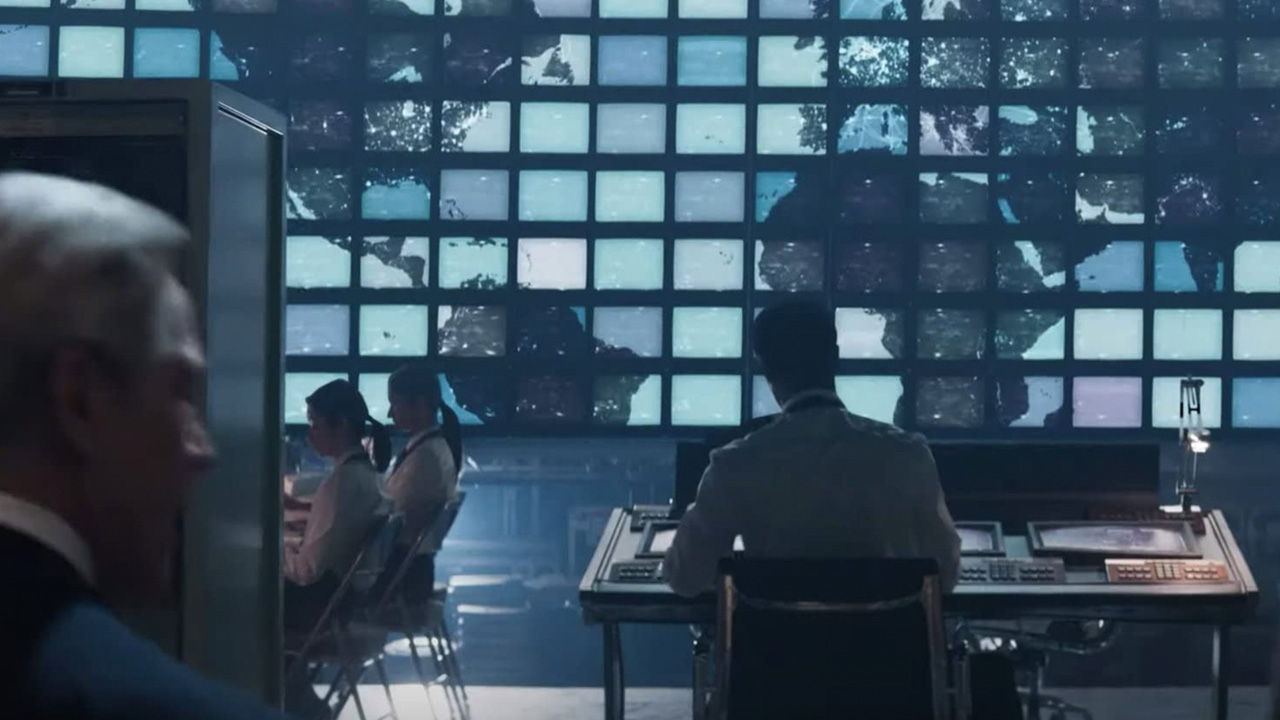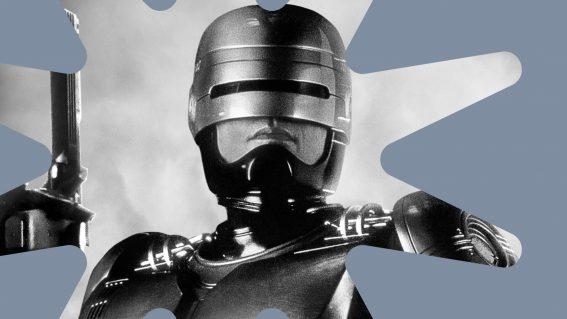Dead Reckoning Part One has a truly great modern villain
Ethan Hunt’s latest nemesis is a perfect foe for our post-truth era: everywhere and nowhere all at once.

Ethan Hunt has accepted countless missions, worn a lotta faces, and thwarted heaps of evil schemes over the years. But to Luke Buckmaster, the sinister AI force in Mission: Impossible—Dead Reckoning Part One might be the most intimidating—and darkly realistic—foe yet.
Mission: Impossible - Dead Reckoning
Mission: Impossible – Dead Reckoning Part One makes a compelling argument that the ultimate action movie villain is nowhere, everywhere, physical, virtual, in the air and on the ground, with no face and in fact no human features. It knows the odds, models the probabilities, and uses any computer system at its disposal—which is every computer system. This villain is truly one for the ages: an all-pervading, invasive sentient AI program named The Entity, which has infiltrated all global networks, from banking institutions to military systems.
Remember when people were concerned about social media data breaches? Pfft. The Entity can control our nukes. It also engages in epic gaslighting, capable of manipulating anything that can be seen or heard digitally. Either in real-time (erasing a person from surveillance footage, for instance, or deepfaking someone) or retrospectively (i.e. deleting entire histories and/or writing its own). Whoever controls The Entity, as one character notes, “controls the concept of truth.” Another way to describe the villain in Dead Reckoning Part One: the collapse of consensus reality.
Movie publicity departments love hyperbolic turns of phrase like “Ethan Hunt’s greatest adversary.” And yet for once a line like that feels justified. The producers of Dead Reckoning must barely believe their luck, commencing production more than two years before the likes of ChatGPT turned AI into the world’s most talked about—and feared—emerging technology. The Entity arrives freakishly timed to coincide with a period of intense AI-related anxiety, giving it a water cooler topicality—even a smidge of social critique—unusual for a production this size.
In an amusingly analogue twist, the key to controlling (or shutting down) The Entity is, well, a key. Like the titular device designed by Archimedes in Indiana Jones and the Dial of Destiny, the key is comprised of two parts, which click together like a 3D puzzle—making it tough for old mate Ethan Hunt (Tom Cruise) to get an extra copy cut by his local locksmith. A prologue sequence based in a Russian submarine shows how The Entity can easily configure a military incident, essentially by showing the flummoxed crew a torpedo that isn’t actually approaching, then not showing one that is.

Hunt’s mission, should he choose to accept it (for once I’d like to hear him say “nah, I’ll get a beer instead”) is to obtain both parts of the key. Co-writers Christopher McQuarrie (also the director) and Erik Jendresen structure the plot around set pieces, all of which are excitingly executed: a showdown in an airport between various intersecting parties, the key changing hands; a chaotic car chase through Rome; and a climactic showdown on board (and above) a steam train, accessible—for Hunt at least—only by a death-defying stunt (*cue theme music*).
Hunt bumps up against a slick British thief named Grace (played with tenacious charm by Hayley Atwell) whose narrative function is similar to Phoebe Waller-Bridge’s character in Dial of Destiny. She’s a foil to the protagonist, testing his mettle while drawing out his virtues, and an instigator to keep the plot shooting off in different directions. Hunt teams up with his usual outside-the-system, off-the-books operatives including Ving Rhames’ Luther and Simon Pegg’s Benji, both spending much time hunched over keyboards and blinking at screens. In this outing their exasperation comes not only from an “impossible” mission, but an understanding that whatever hackerish wizardry they cook up is small fries compared to the might of The Entity.

This villain is tantalizingly elusive; perhaps it enjoys playing mind games and making people jump at shadows. There’s no HAL-esque moment when the computer assumes an ominous voice and talks to Hunt: this role is outsourced to the AI-aligned bad guy, Esai Morales’s Gabriel, who has a “this time it’s personal” history with the hero. But there is a moment when The Entity deploys a colleague’s voice, messing with Hunt, in a scene that illustrates a core fear in contemporary society: that we belong to a world where we can no longer trust our eyes and ears.
The Mission: Impossible films have dabbled with this idea before, in one of their most entertaining embellishments: the use of eerily convincing rubber masks, which conveniently come with built-in voice manipulation hardware (so wearers look and sound like the person they’re imitating). Perhaps the reason there’s not all that much mask usage in Dead Reckoning Part One is because this once bedazzling subterfuge also pales in comparison to the illusionary malice undertaken by The Entity. It’s everywhere, it’s nowhere, it’s real, it’s fake: a perfect villain for the post-truth era.


























